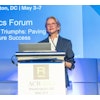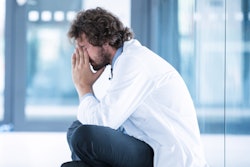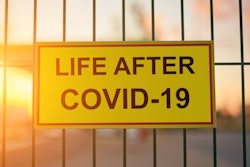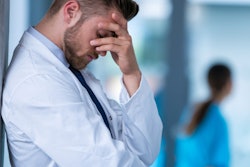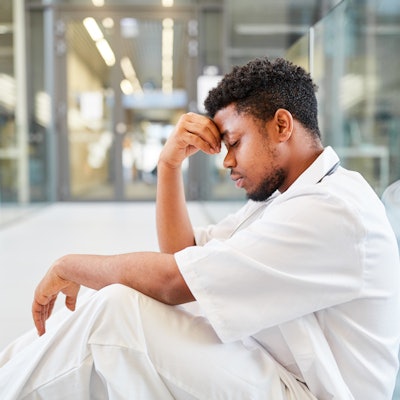
Burnout is high among breast imaging radiologists -- particularly among younger physicians, who report a burnout rate of more than 80%, according to a study published online February 28 in the Journal of Breast Imaging.
The findings further confirm what previous studies have suggested: Burnout is real, wrote a team led by Dr. Jay Parikh of MD Anderson Cancer Center in Houston. It's characterized by three aspects: emotional exhaustion, depersonalization, and a sense of ineffectiveness and lack of accomplishment, the authors noted.
"Our study shows that breast imaging radiologists experience significant burnout, with high levels of emotional exhaustion (69%) and depersonalization (63%)," the authors wrote. "These rates are similar to those seen in prior similarly designed studies of musculoskeletal and pediatric radiologists, confirming that burnout is a significant problem throughout radiology."
Awareness of physician burnout has increased over the past decade, and concern about its effects -- such as reduced quality of life, substance abuse, unprofessional workplace behavior, and medical errors -- has risen as well. Studies have shown that radiologists of many subspecialties experience burnout, but research regarding the phenomenon and breast imaging is scarce.
"Breast imaging has unique stressors compared to other areas of radiology, including performing mandated accreditation responsibilities, communicating the need for biopsies to patients, and even communicating the diagnosis of breast cancer to patients in some practice settings," the group noted.
The study consisted of a survey with questions based on workforce surveys conducted by the American College of Radiology and the Maslach Burnout Inventory to evaluate the three aspects of burnout. Parikh's team sent the survey to members of the Society of Breast Imaging between February and March 2019.
A total of 370 breast imaging radiologists responded to the survey. More than three-quarters stated they were experienced high levels of burnout (78.4%) in at least one of the three aspects of the condition, 54.4% were burned out in at least two of the aspects of burnout, and 7.5% were burned out in all three aspects.
The group also found that burnout was linked to physician age, with the highest rates reported in radiologists between 36 and 45 (83.2% having burnout in at least one of its aspects).
"This [result] is particularly troubling, as the future of our specialty hinges on the success of our youngest members," Parikh and colleagues wrote.
The researchers found no statistically significant difference among the three aspects of burnout by practice type or size, geographic location, or percentage of time performing clinical breast imaging. Burnout rates were higher, however, among those radiologists working full time (80.7%) compared with those working part time (69.9%).
It's crucial to mitigate burnout for both physician health and patient care, according to the authors.
"The high prevalence of burnout amongst breast imaging radiologists mandates professional organizations, employers, and individual radiologists address burnout as a high priority," they concluded. "Failure to do so may not only affect the longitudinal wellness of breast imaging radiologists but also broadly affect patient care."



